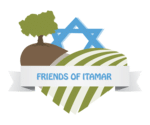Purim Pesach – Redemption 2009
Purim – Pesach March 13, 2009 The thirty days that exist between Purim and Pesach bring with them an association of different ideas. For some people, it is the budding of the tre
Purim – Aday Lo Yada – 2009
Purim – Aday Lo Yada March 6, 2009 Purim comes out of a box we keep stored way up in the tip top of our closet. Every year when it is dripping wet outside and a bright green in t
Tu B’shvat Rectifying the Forbidden Fruit 2009
Tu B’shvat (2009)– Rectifying the forbidden fruit February 6, 2009 “For the Lord is bringing you into a good land … a land of wheat and barley, vines and fig trees
Succoth 5769
A Blessing for the Fruit of the Trees – Succoth 5769 The secret of the Four Species The great Cabalist and student of the famous Ramchal, Harav Moshe David Wali, was an author of
Yom Kippur 5769
Yom Kippur message Oct. 8th 2008 Tet Tishtay 5769 Seemingly, this week’s Parasha has a strange beginning as it opens with “And Moses went and spoke these words to all I
Rosh Hashanah 5769
Rosh Hashanah Thoughts 5769 In a world that we balance our lives between the practical accomplishments of our goals and spiritually yearning for the unreachable, Elul is a time tha
Lag Baomer Message
Lag Baomer-2008 May 23, 2008 Lag Baomer has always been a great day in itself; before the days of Rabbi Shimon Bar Yochay, and even before the counting of the Omer. It is the day t
Lag Baomer
Bahar- Lag Ba’Omer May 16, 2008 Rabbi Shimon Bar Yochay was one of the five surviving students of Rabbi Akiva that all died between Pesach and the Atzeret. It is brought down
Purim
Dear Readers, A few years ago, my husband and I and some of our children went to demonstrate against the disengagement from Gaza- what in essence was actualized in the dismantling
Tu B’Shvat
Tu B’Shvat January 24, 2008 On Tu B’Shvat the source of potential growth in all spheres of life awakens. The tree in the field stands bare exposed to cold, wind, and ra

